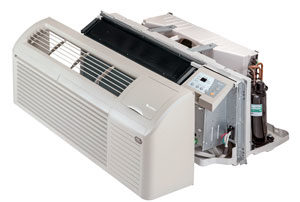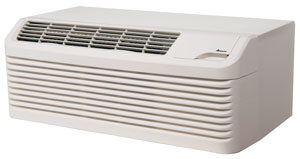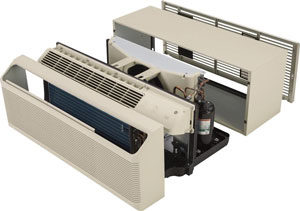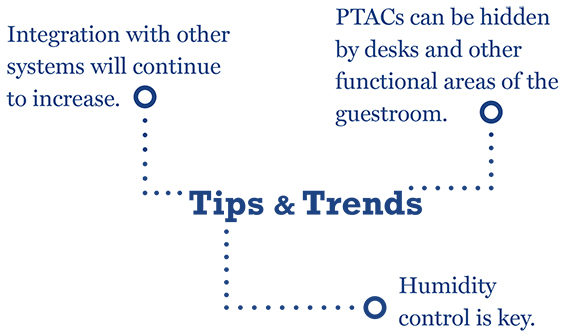Trends in packaged terminal air conditioners (PTACs) are headed in the right direction. But the top issue from guests concerning PTAC units is undoubtedly—and consistently—noise.

The E-TAC II from Gree
features a wireless thermostat and remote control, front desk management interface, a silencer system with Aero-Quiet fan and humidity “dry” mode.
“Manufacturers are making good inroads on noise reduction both from the units and the building exterior environment,” said David Abraham, VP of facilities and engineering at White Lodging Services Corporation.
“While the units continually improve, the real change is with the advancements in technology as it pertains to energy-management capabilities and improved guest comfort,” said John DelGrosso, VP of construction, engineering & technical services, Waterford Hotel Group Inc. “Technology continues to challenge the way we do things and offers opportunities for efficiency. The latest PTAC technology offers greater durability, increased guest comfort and noise reduction.”
Though noise is the byproduct, the main component of PTAC units is obviously its heating and cooling system. PTAC units are making marked improvements in this area, as well. “Technology continues to leap forward and tie more to the convenience of the guest in all aspects of their stay,” DelGrosso said. “This includes the heating and cooling of a guestroom and allowing for a better environment for the guest.”
Abraham added, “Several manufacturers are jumping into the ‘PTAC as make-up air unit.’ We have not tried these and the jury is still out on whether this is a good design.”

Amana-brand PTAC units are now available with R-32 refrigerant from Daikin, which boosts energy-efficient performance up to 13.1 EER and, according to studies, has zero ozone depletion potential and one-third Global Warming Potential (GWP) of the R-410A refrigerant.
Designers are continually tasked with the challenge of designing around the PTAC. How does a designer elevate the aesthetic of the room while contending with an immobile unit?
Caleb Mulvena, principal at Mapos LLC, knows the challenge all too well—but he is up to the task. “Hotels give you a set of parameters you have to accept. In previous projects, we couldn’t introduce new walls or move walls and we had to leave the PTAC in its location, so as a designer, you’re forced into a corner. That’s where design can shine. In the case of NYC’s Hotel Shocard, we turned the PTAC cover into a very slim desk.”
PTAC trends are also concerned with improving technological components. “Additionally, energy-management companies are working with PTAC manufacturers to develop improved technology for a better guest experience and systems management,” DelGrosso said. “This allows us to look at guestrooms or areas from a laptop, regardless of where we are located. Changes to temperature can be made remotely for efficiencies and cost savings. Email notifications indicating that a unit is not functioning properly allow for corrections to be made before the guest even knows there is a problem.”

GE’s Zoneline PTACs include features such as electronic touch controls with LED display, cooling capacity, dehumidification, reverse heat cycle, heat pump efficiency and indoor fan CFM.
Jason Allen, president of Pinnacle South LLC, recommends that owners and brands pay attention to PTAC units because they can be harmful to the guest experience—or they can be helpful to the property on the whole. “It’s vital to have the latest product knowledge because PTAC units are an important way to control a major expense—namely, utility costs,” said Allen. “Manufacturers are engineering units to become much more efficient, for example, with features such as humidity control. Moisture inside a hotel can be the culprit for many problems that are expensive to fix, so controlling humidity is healthy for guests and for the owner’s budget.”
Allen sees further potential for PTAC units beyond their current use as a self-contained heating and air conditioning system. “Many hotels are considering the property management systems (PMS) from their PTACs, which allows owners to monitor maintenance and usage, plus set control limits and potentially know about issues before a guest has had a bad experience. In this way, the PMS systems will pay for themselves in just a few years—depending on location and climate.”


